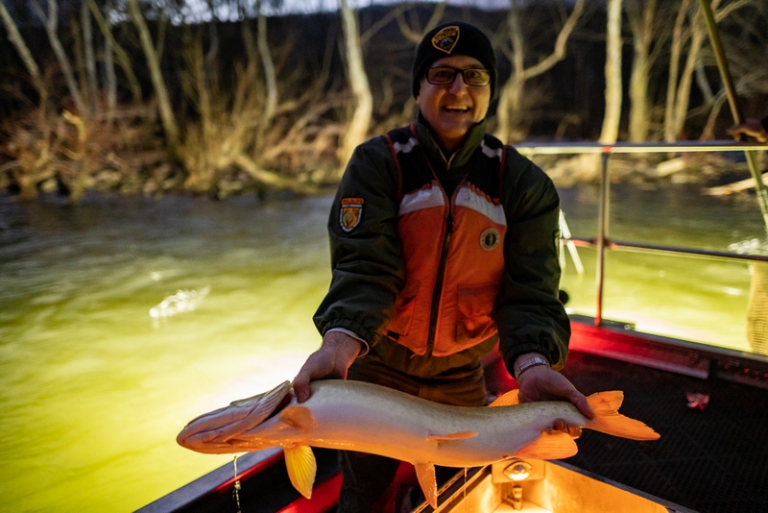
Electrofishing is proving to be an effective way to collect data about walleye, a popular sport fish, the population of which the West Virginia Division of Natural Resources has been managing in the New River for nearly 20 years.
Mark Scott, assistant chief of fish management for the division, says electrofishing is a common method of sampling fish populations to see how they’re doing in their habitat.
Scott says two electrodes are used to send electric currents through the water, which attracts fish and makes them easier to catch and study.
“This is a standard sampling procedure for a lot of different species," Scott explained. "We can set it to different frequencies and target catfish, smaller fish, and bigger fish. And it doesn’t hurt the fish. It just immobilizes them.”
Once a biologist catches a fish, he or she weighs and measures it and immediately releases it back into the water. The information they collect helps the division set fishing regulations.
Division biologists recently used the method to study New River walleye, also known as the Eastern Highlands walleye, which thrive in the Elk, New, and Gauley rivers in southern West Virginia. They may also be found in the Cheat, Tygart, Stephens, Stonecoal, Summersville, and Jennings Randolph lakes.
During and after the spawning season, spring is one of the best times for walleye fishing, Scott said.
For more information about walleye regulations, anglers should check page 8 in their copy of the 2020 West Virginia Fishing Regulations.





























Facebook Comments